Related Research Articles

Kazakhstan, the largest country fully within the Eurasian Steppe, has been a historical crossroads and home to numerous different peoples, states and empires throughout history. Throughout history, peoples on the territory of modern Kazakhstan had nomadic lifestyle, which developed and influenced Kazakh culture.

Almaty, formerly Alma-Ata, is the largest city in Kazakhstan, with a population exceeding two million residents within its metropolitan area. Located in the foothills of the Trans-Ili Alatau mountains in southern Kazakhstan, near the border with Kyrgyzstan, Almaty stands as a pivotal center of culture, commerce, finance and innovation. The city is nestled at an elevation of 700–900 metres, with the Big Almaty and Small Almaty rivers running through it, originating from the surrounding mountains and flowing into the plains. Almaty is the second-largest city in Central Asia and the third-largest in the Eurasian Economic Union (EEU).

The Kazakh Soviet Socialist Republic, also known as Soviet Kazakhstan, the Kazakh SSR, KSSR, or simply Kazakhstan, was one of the transcontinental constituent republics of the Soviet Union (USSR) from 1936 to 1991. Located in northern Central Asia, it was created on 5 December 1936 from the Kazakh ASSR, an autonomous republic of the Russian SFSR.
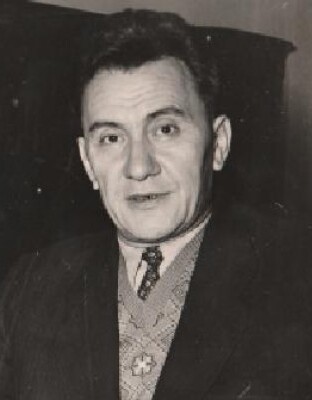
Dinmukhamed Akhmetuly "Dimash" Kunaev was a Kazakh Soviet communist politician who served as the First Secretary of the Communist Party of the Kazakh SSR.
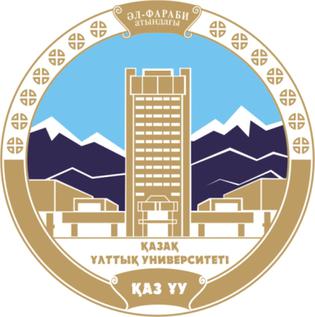
Al-Farabi Kazakh National University (Kazakh: Әл-Фараби атындағы Қазақ ұлттық университеті), also called KazNU or KazGU, is a national research university located in Almaty, Kazakhstan. Named after philosopher and scholar al-Farabi, it is one of the country's largest universities.

Soviet Central Asia was the part of Central Asia administered by the Russian SFSR and then the Soviet Union between 1918 and 1991, when the Central Asian republics declared independence. It is nearly synonymous with Russian Turkestan in the Russian Empire. Soviet Central Asia went through many territorial divisions before the current borders were created in the 1920s and 1930s.

Mustafa bek Shokay was a Kazakh social and political activist and ideologue of the Turkestan Autonomy. From 1921, he lived in exile in France.
Satbayev University is a technical university located in Almaty, Kazakhstan. The university is the oldest technical university in Kazakhstan, comprising 10 institutions and 27 departments.
Altay Sarsenuly Amanzholov was a Kazakh SSR, Kazakh Turkologist. He followed his father Sarsen Amanzholov's steps continuing in this field of study.

Turar Ryskululy Ryskulov was a Soviet politician, the chairman of the Central Executive Committee of the Turkestan Autonomous Soviet Socialist Republic.

Kazakh National Medical University is a university in Almaty, Kazakhstan. It was established in 1931, and the first rector was S.D. Asfendiyarov. In 2001, the government classified it as a "national" university.

The Kazakhstan–Russia border is the 7,644-kilometre (4,750 mi) international border between the Republic of Kazakhstan and the Russian Federation. It is the longest continuous international border in the world and the second longest by total length, after the Canada–United States border. It is in the same location as the former administrative-territorial border between the Kazakh Soviet Socialist Republic and the Russian Soviet Federative Socialist Republic.
Yesken Amanzholovich Sergebayev - is a prominent Soviet and Kazakh sculptor, former Dean of Paintings and Sculptor Faculty, currently he is the Professor and Head of Sculptor Department of Kazakh National Academy of Arts named after T.Zhurgenov.

Malik Aueskhanuly Oskenbay is an artist, sculptor, the head of the subject-cyclic commission of the specialties "Painting, sculpture, theater arts" in Almaty College of Decorative and Applied Arts, and a member of the Union of Artists of Kazakhstan.
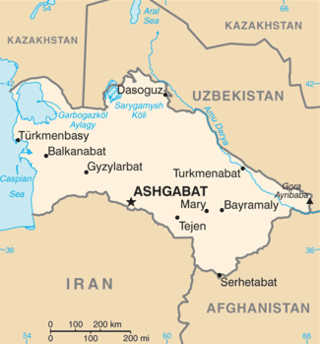
The Kazakhstan–Turkmenistan border is 413 kilometres (257 mi) in length and runs from the Caspian Sea to the tripoint with Uzbekistan. It is the shortest international boundary of both states.
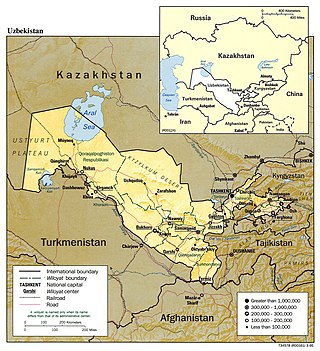
The Kazakhstan–Uzbekistan border is 2,330 km (1,450 mi) long and runs from the tripoint with Turkmenistan to the tripoint with Kyrgyzstan. It is Uzbekistan's longest external boundary. The Uzbek capital Tashkent is situated just 13 km (8.1 mi) from this border.
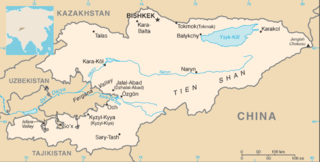
The Kazakhstan–Kyrgyzstan border is 1,212 kilometres (753 mi) and runs from the tripoint with Uzbekistan to the tripoint with China. Bishkek, the Kyrgyz capital, is situated just 16 km to the south of this boundary, and Almaty is situated just 29 kilometres (18 mi) to the north of it.

Gulsum Asfendiyarova was the first Kazakh woman to earn a medical degree. She played a key role in organizing the healthcare system in the Turkestan region and was also a dedicated medical educator.
Erasyl Abilqasymov is a retired Kazakh politician who served as a member of the Mäjilis from 2001 to 2007. He was a candidate for the Communist People's Party of Kazakhstan (QKHP) in the 2005 presidential election.
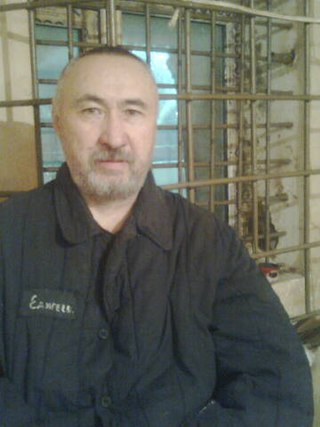
Aron Qabyşūly Edigeev, better known as Aron Atabek, was a Kazakh writer, poet and dissident.
References
- 1 2 Shmidt, O.Yu.; Bukharin, N.I., eds. (1926). Большая советская энциклопедиа, volume 3. Moscow. p. 715.
{{cite book}}: CS1 maint: location missing publisher (link) - ↑ "Sanjar Dzhafarovich Asfendiyarov". Kazakh National Medical University. Retrieved 6 August 2019.
- ↑ "Sanjar Dzhafarovich Asfendiyarov". Kazakh National Medical University. Retrieved 6 August 2019.
- ↑ "Sanjar Dzhafarovich Asfendiyarov". Kazakh National Medical University named after S.D. Asfendiyarov (KazNMU). Retrieved 2019-08-07.
- ↑ "Sanjar Dzhafarovich Asfendiyarov". Kazakh National Medical University named after S.D. Asfendiyarov (KazNMU). Retrieved 2019-08-07.